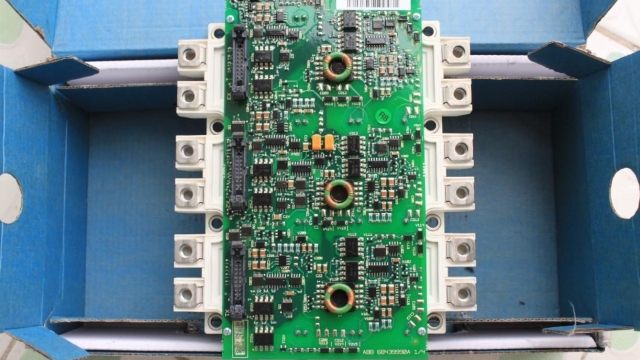
Unleashing the Power: An In-Depth Look at IGBT Modules

IGBT modules, short for Insulated Gate Bipolar Transistor modules, have revolutionized power electronics with their ability to efficiently switch high voltages and currents. These advanced semiconductor devices combine the high-speed control capability of a MOSFET with the high-voltage and high-current handling capabilities of a bipolar transistor. As a result, IGBT modules are widely used in various applications where power efficiency, reliability, and precise control are crucial.
One of the key advantages of IGBT modules is their ability to handle high power levels while offering fast switching speeds. This makes them ideal for applications such as motor drives, renewable energy systems, and industrial power supplies, where efficient power conversion is essential. IGBT modules are designed to deliver optimized performance, ensuring stable and reliable operation even in demanding environments.
Working Principle of IGBT Modules
In an IGBT module, the insulated gate bipolar transistor, commonly known as IGBT, plays a crucial role in the power conversion process. The primary function of the IGBT is to switch high power loads on and off rapidly with minimal energy loss.
The IGBT module combines the advantages of both MOSFET and bipolar junction transistor technologies. It operates by using a gate to control the flow of current between the collector and emitter terminals, allowing for efficient power switching in various applications such as motor control, renewable energy systems, and industrial equipment.
When a signal is applied to the gate of the IGBT, it triggers the device to conduct current between the collector and emitter. This controlled conduction enables the IGBT module to regulate power flow, providing a reliable and efficient solution for high-power electronic circuits.
Applications of IGBT Modules
One key application of IGBT modules is in renewable energy systems. These modules play a crucial role in converting the variable output from sources like solar and wind into usable electricity for homes and businesses. Their efficiency and reliability make them ideal for ensuring the smooth operation of renewable energy installations.
Another important application is in electric vehicles. IGBT modules help control the power flow in electric vehicle drivetrains, allowing for efficient energy usage and improved performance. By utilizing these modules, electric vehicles can achieve higher speeds, longer driving ranges, and overall better energy management.
IGBT modules are also extensively used in industrial automation systems. With their ability to handle high voltages and currents, these modules are essential components in motor drives, power supplies, and various control systems in industrial settings. They enable precise and reliable control over machinery, ensuring optimal performance and safety in industrial environments.
Advantages of IGBT Modules
IGBT modules offer high efficiency and low power consumption, making them ideal for various applications in industries such as automotive, renewable energy, and industrial automation. Their ability to handle high voltage and high current levels while maintaining low losses makes them a preferred choice for power electronics systems requiring reliable and energy-efficient operation.
IGBT Module
Another key advantage of IGBT modules is their robust and durable construction, which enhances their reliability and lifespan in demanding operating conditions. This durability allows for extended operating hours and reduced maintenance requirements, leading to cost savings for businesses that rely on these modules for their operations.
Furthermore, IGBT modules provide effective thermal management capabilities, ensuring that heat dissipation is efficiently managed to prevent overheating and maintain optimal performance levels. This thermal efficiency contributes to the longevity of the modules and enhances their overall operational stability in challenging environments.



